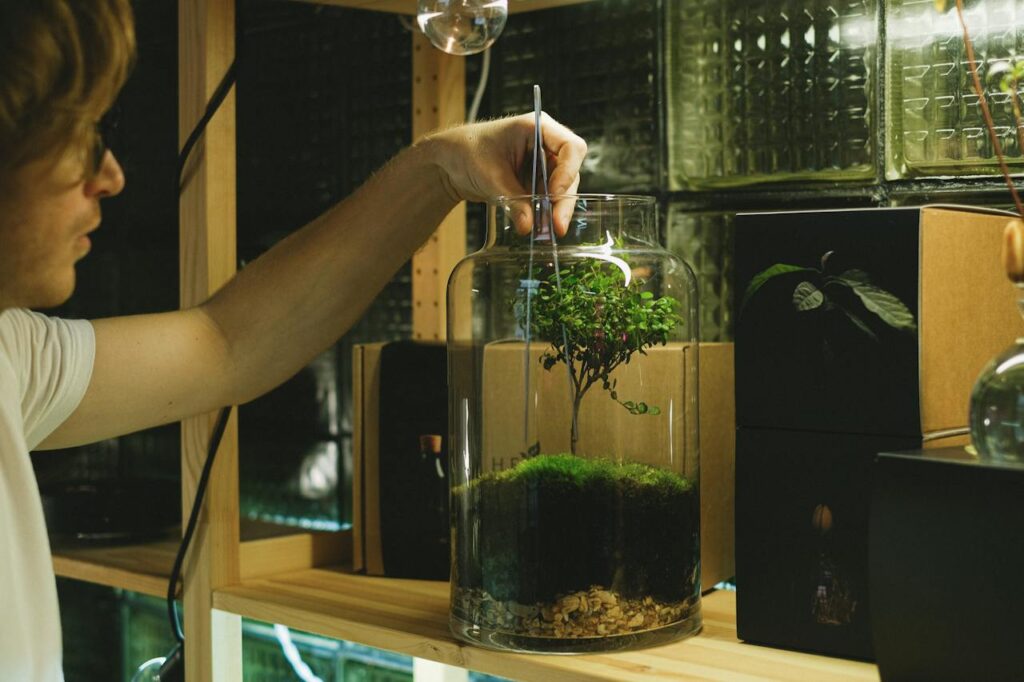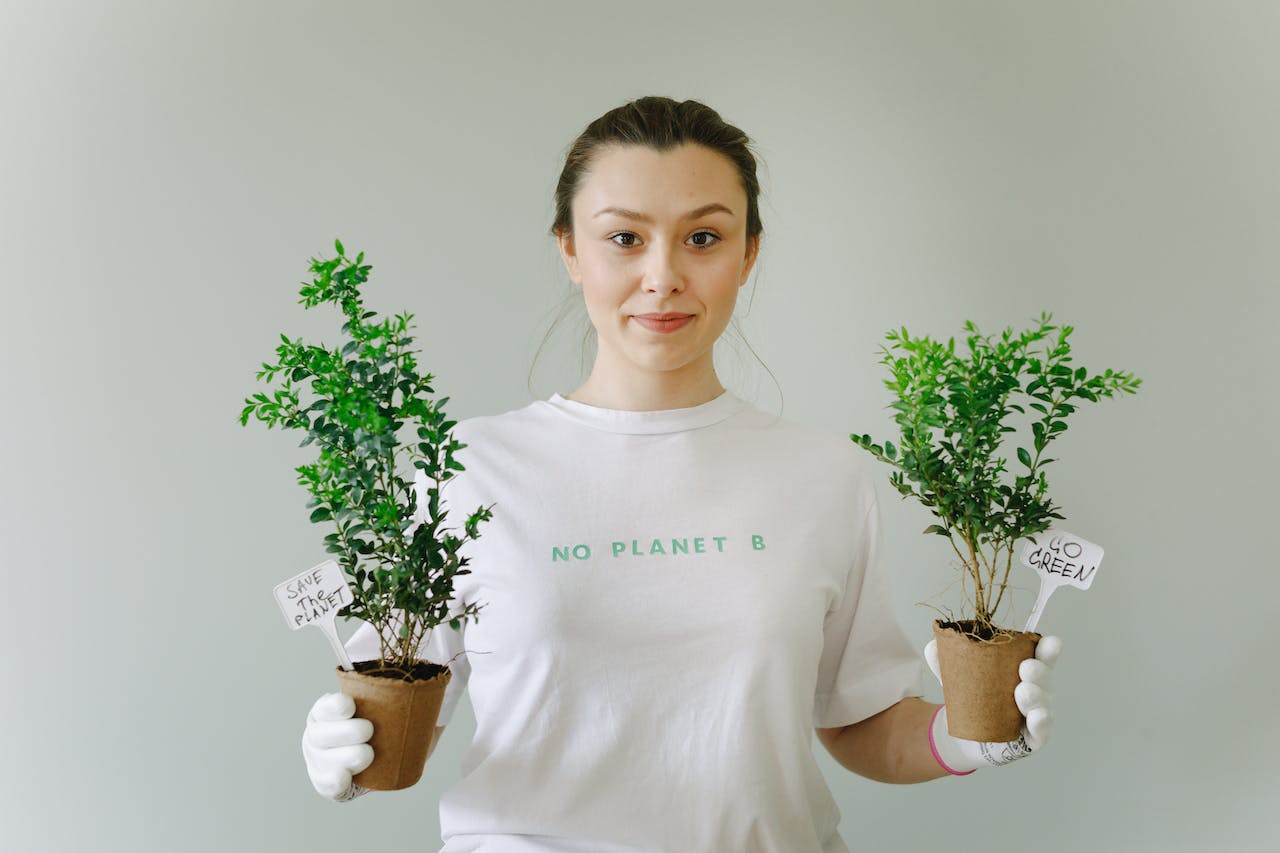Having plants in your home can greatly improve your indoor environment. Plants provide numerous benefits – they purify the air, increase oxygen levels, reduce stress, improve mood and productivity, and much more. Caring for houseplants properly allows them to thrive and maximize these benefits. With some basic knowledge about plant care, anyone can become a successful indoor gardener. This comprehensive guide will teach you everything you need to know about caring for plants at home.
Choosing the Right Plants
The first step to caring for plants at home is selecting the right ones for your environment. Consider the following when picking plants:
Light Requirements
The amount of natural light your space receives determines what plants will thrive there. Assess the light in each room before choosing plants.
- Low Light Plants: Tolerate less than 2 hours of direct sun. Choose low light plants for north-facing rooms or areas away from windows. Examples – Pothos, Chinese Evergreen, ZZ Plant, Philodendron, Snake Plant.
- Medium Light Plants: Need 2-5 hours of direct sun daily. Place these plants near east or west-facing windows. Examples – Peperomia, Prayer Plant, Dracaena, Peace Lily.
- High Light Plants: Require more than 5 hours of direct sunlight. South-facing windows are ideal. Examples – Succulents, Fiddle Leaf Fig, Croton, Rubber Plant.
Climate Conditions
Factor in the temperature, humidity, and airflow of your home before picking plants. Certain plants thrive in cool, warm, dry or humid conditions. Select plants suited to your climate.
Size and Growth Rate
Pay attention to each plant’s mature size and growth rate. Choose plants that will fit the space when fully grown. Slow growing plants are best for small areas. Fast growing options work for larger spaces.
Maintenance Level
Some plants need more care and effort than others. If you’re a beginner, opt for low maintenance plants first. Consider how much time and effort you can commit when choosing plants.
Providing Proper Soil
The right potting mix forms the foundation of healthy plants. Regular garden soil is too heavy for containers. Instead, use a specialized indoor potting mix that drains well and provides nutrients. The ideal soil contains:
- Peat or coconut coir to retain moisture
- Perlite or vermiculite to improve drainage
- Compost to supply nutrients and support root growth
- Worm castings to boost fertility (optional)
Use a quality potting mix formulated for indoor plants. You can make adjustments like adding more perlite for extra drainage. Re-potting with fresh soil annually rejuvenates plant roots.
Choosing the Correct Pot or Planter

The container you grow your plants in directly affects their health. Consider the following when selecting indoor plant pots:
- Drainage holes – Essential to prevent soggy soil and root rot. Choose pots with holes or add your own.
- Material – Clay, ceramic, plastic, and wood all work well. Match material to plant needs.
- Size – Pick a pot proportional to the plant, allowing room for growth. Upgrade pot size as the plant gets bigger.
- Aesthetics – Choose an attractive pot that complements your decor. Add a drainage tray to catch overflow.
Make sure to use clean pots and trays. Sterilize used containers before reuse to prevent disease. Add drainage as needed before planting.
Providing Proper Lighting
One of the most important elements of plant care is providing adequate light. Light fuels photosynthesis and allows plants to grow and thrive. Assess the natural lighting in your home and take these steps to supplement if needed:
- Place plants near windows or skylights that offer ample sunshine. Rotate plants periodically for even light exposure.
- Use sheer curtains or move plants back from windows if light is too intense. Filtering prevents leaf scorch.
- Add grow lights like LED or fluorescent bulbs for extra illumination. Use adjustable hangers to position lights properly.
- Use timer plugs or apps to automate grow light schedules that follow natural day/night cycles.
- Move plants into better lit spaces as needed. Rotate plants around your home to give everyone equal light access.
Closely observe your plants and adjust lighting as required. Proper light prevents stretching and promotes healthy, compact growth.
Mastering Watering Techniques

Proper watering prevents almost every common houseplant problem. While needs vary between plants, follow these basic rules:
- Check soil moisture before watering by inserting a finger into the soil. Only water when the top few inches are dry.
- Water thoroughly until it drains from the bottom holes. This encourages deep root growth.
- Dump excess water from saucers after watering to prevent soggy soil.
- Maintain consistent moisture, not allowing plants to completely dry out or stay soggy. Add pebbles to pots for drainage.
- Adjust watering frequency based on factors like season, growth rate, sunlight, temperature, and humidity.
- Water in the morning so leaves dry quicker, preventing disease.
- Use room temperature water rather than extremely cold water.
Learn your plant’s preferences and fine tune your watering schedule accordingly. Proper moisture keeps plants looking their best.
Humidity
Many popular houseplants originate in tropical environments with high humidity. Replicating these conditions at home prevents issues like brown leaf tips and edges. Try these humidity boosting tricks:
- Use a humidifier to increase overall humidity levels in your home, especially in dry winter months.
- Place plants on pebble trays filled with water so evaporating moisture surrounds the plants.
- Mist plant leaves occasionally using a spray bottle filled with plain water.
- Group plants together to create a self-contained humid microclimate.
- Grow plants in bathrooms and kitchens where humidity naturally tends to be higher.
If plants show signs of low humidity, adjust your approach. Observe your plants and maintain ideal moisture levels.
Providing Adequate Air Circulation
Proper air movement is vital for healthy plants. Stagnant air causes issues like mold and fungal diseases. Promote airflow with these tips:
- Use circulating fans to gently blow air around your indoor garden. Direct fans to blow leaves occasionally.
- Space plants appropriately to allow air to flow between them. Avoid overcrowding.
- Trim and prune plants routinely to open up internal airflow channels.
- Rotate plants periodically so all sides get exposure to fresh circulating air.
- Open windows regularly when weather permits to prevent stagnant conditions.
Look for signs like dust buildup, dropped or yellowing leaves. Increase circulation if plants seem suffocated. Gentle airflow nourishes plants!
Fertilizing
While potting mixes provide basic nutrition, plants need supplemental feeding to truly thrive. Fertilize houseplants during the active growing season from spring through summer.
- Use a balanced liquid houseplant fertilizer diluted to half or quarter strength. Follow label directions.
- Feed plants every 2-3 weeks during peak growing times, and monthly in winter.
- Apply fertilizer when the soil is moist so plants can readily absorb nutrients.
- Leach excess salts by watering thoroughly after fertilizing. This prevents buildup.
- Supplement with compost tea or worm castings for added benefits.
Observe plant health and adjust your fertilizing schedule as needed. Feeding promotes vigorous growth and beautiful greenery!
Pruning for Optimal Growth
Regular pruning maintains plants for maximum health. Follow these proper pruning techniques:
- Always use clean, sharp pruners or scissors to avoid damage.
- Remove spent flowers and browned stems to encourage new growth.
- Eliminate crowded, crossing, or leggy growth for better shape and airflow.
- Prune damaged or yellow leaves, and trim dead tips.
- Cut just above nodes or leaf scars on stems for best results.
- Time pruning to occur before major growth periods.
- Never remove more than 20% of a plant’s foliage at one time.
Learn where and how to make proper cuts for each plant variety you grow. Thoughtful pruning improves plant shape and productivity.
Repotting and Dividing
As plants grow, they eventually outgrow their containers. Repotting into larger pots gives their roots room to spread.
When to repot:
- When plants become rootbound or potted media dries out very fast
- When top growth seems disproportionate to pot size
- When roots emerge from the drainage holes below
- Every 1-3 years on average
How to repot:
- Water the plant well a day before repotting to moisten soil
- Carefully remove from pot and loosen tangled roots if rootbound
- Prune any damaged roots
- Choose a new pot that’s 2-4 inches larger
- Add fresh potting mix amended with compost or worm castings
- Place plant in new pot at proper depth and fill edges with mix
- Water well to help roots establish
Some plants like spider plants form babies that can be divided and repotted separately. Dividing helps stimulate growth and gives you more plants!
Troubleshooting Common Issues
Being able to identify and fix common plant problems is a key skill. Watch for these troubles and use these solutions:
Wilting or drooping leaves – Result of underwatering. Check soil and water if dry. Can also be caused by rootbound plants needing repotting.
Yellow or dropping leaves – Signs of overwatering or soggy soil. Allow soil to dry out before watering again. Insufficient light also causes this.
Dry leaf tips/edges – Caused by low humidity. Increase humidity levels around plants.
Spots on leaves – Leaf spot diseases often stem from overwatering issues. Improve watering habits and remove affected leaves.
Stunted growth – Indicates inadequate lighting or fertilizing. Increase light exposure and fertilize more. Could also be overly dry or wet soil.
Pests – Common houseplant pests include mealybugs, spider mites, aphids, fungus gnats. Isolate and treat infected plants. Control with neem oil, insecticidal soap, etc.
Learning to read plant signals allows you to correct problems before they escalate. Keep your plants happy and healthy!
Caring for Specific Plant Varieties
While all plants share core needs, certain varieties have special requirements. Learn the ideal growing conditions for popular types:
Succulents – Require very well-draining soil mix. Allow to dry out between waterings. Need lots of sun. Use cactus fertilizer.
Orchids – Prefer containers with air circulation. Water 1-2 times per week, allowing to dry some between. Need 60-80% humidity. Fertilize weakly weekly.
Bonsai trees – Require bright light and high humidity. Use well-draining bonsai soil mix. Water when top layer is dry. Prune and shape branches regularly.
Ferns – Mix peat moss into potting soil to retain humidity. Keep soil evenly moist. Place out of direct sun. Mist leaves often.
Herbs – Need at least 4-6 hours of daily sun. Use well-draining potting mix. Allow soil to dry between waterings. Fertilize every 3-4 weeks during growing season.
Learn the specifics for each unique plant variety you bring home. Catering to their needs helps them thrive!
Displaying Plants Creatively
A collection of well-cared for plants deserves an artful display. Be creative with these plant styling ideas:
- Group plants with similar needs together on shelves or consoles. Include complementary heights and leaf shapes.
- Use decorative cachepots or planters to showcase plants. Paint and stencil terra cotta pots for custom designs.
- Suspend trailing plants like philodendrons and pothos in hanging baskets. Use decorative macrame hangers.
- Place vining plants on high shelves and allow to trail down for a waterfall effect.
- Combine houseplants with decorative supports like moss poles, trellises and stakes. Train climbing plants to grow on these structures.
- Incorporate non-plant decorative accents like candles, ceramics, vases, framed art, and table books into your displays.
- Rotate plants seasonally to keep displays looking fresh and move plants into ideal lighting conditions.
Let your creativity run free when designing your plant displays. Blend colors, shapes, sizes and textures for an interior jungle!
10 Key Takeaways for Successfully Caring for Plants at Home
- Choose plants suited to your home’s unique conditions like light, climate, and space.
- Use proper potting soil mixes formulated for containers and indoor growth.
- Pick containers with drainage holes and waterproof trays to prevent soggy soil.
- Assess and adjust natural lighting if needed, using grow lights to supplement.
- Water thoroughly when soil is partly dry, adjusting for each plant’s moisture preferences.
- Increase humidity through humidifiers, misting, and pebble trays for tropical plants.
- Promote air circulation with fans and proper spacing between plants.
- Fertilize with a balanced houseplant fertilizer during periods of active growth.
- Prune strategically to direct growth and maintain plant shape and health.
- Repot into larger containers as plants grow bigger to allow proper root expansion.
Frequently Asked Questions About Caring for Plants at Home
Caring for houseplants often comes with many questions, especially for beginners. Here are helpful answers to some common FAQs:
How often should I water my indoor plants?
Frequency depends on factors like plant type, pot size, climate, season, etc. The general rule is to water when the top few inches of soil are dry. Establish a schedule based on your plants’ needs.
What type of soil is best for potted plants?
Use a commercial indoor potting mix made for containers, not regular garden soil which compacts. Mixes made with peat/coir, perlite, vermiculite, and compost are ideal.
Where is the best place to keep indoor plants?
Most houseplants grow best in bright, indirect light near east or west-facing windows. South-facing spots work for light-loving plants. Avoid dark corners and areas with no windows.
How do I increase humidity for houseplants?
Use a humidifier, place plants on pebble trays with water, mist leaves, group plants together, or grow them in naturally humid rooms like kitchens and bathrooms.
What should I do if my plant gets pests?
Start by isolating the infected plant to prevent spreading. Wipe leaves with a damp cloth to remove bugs. Spray neem oil or insecticidal soap on the plant every 3-5 days to kill pests. Remove badly infested parts.
When should I fertilize my indoor plants?
Feed plants every 2-3 weeks during the active growing season in spring and summer, reducing to monthly in fall and winter. Use a balanced liquid fertilizer diluted to half or quarter strength.
Why are my plant’s leaf tips turning brown?
Brown leaf tips usually signals low humidity. Try increasing humidity around the plant through pebble trays, misting, grouping plants, etc. Over-fertilizing or using tap water with fluoride can also cause this issue.
How can I revive a dying plant?
Assess possible causes like incorrect watering, lighting, humidity, or pests. Address those issues, then prune damaged growth and repot in fresh soil to rejuvenate the plant. Move it to a suitable location in your home.
Should I mist my houseplants? Does it help?
Misting can boost humidity levels around plants quickly but the effects are temporary. It’s fine to mist occasionally but also use other humidity methods. Use room temperature filtered water and mist soil as well as leaves.
Why do some houseplants get leggy and lean over?
Insufficient light causes weak, leggy growth and drooping. Rotate the plant or supplement with grow lights to ensure it gets adequate sunlight exposure. Prune back leggy stems to encourage fuller growth.
Final Thoughts on Caring for Plants at Home
I hope this guide has given you all the information you need to become a successful indoor plant parent! Providing your plants with suitable growing conditions, nutrients, moisture, and care allows them to reward you with lush, vibrant beauty. Start off with a few beginner-friendly plants to hone your skills. Remember to tailor care to each variety and adapt to their needs. Display your indoor garden creatively and enjoy all the wonderful benefits houseplants provide. With the right care, your plants will soon flourish in your home oasis. Happy growing!
More Articles
- The 75 Hard Challenge: A Complete Guide
- The Secret to Being Content: 10 Ways to Achieve Inner Peace
- Living Life to the Fullest: 10 Tips for Finding Fulfillment and Happiness
- 31 of the Best Pieces of Advice to Live By
- Top 10 Tips for Getting Healthy in 2023
- Inspirational Quotes for Daily Motivation
- 10 Proven Ways to Improve Your Focus and Concentration
- The Most Effective Morning Routine to Increase Your Productivity
- How to Make 2023 the Best Year of Your Life
Images created from – Pexels

